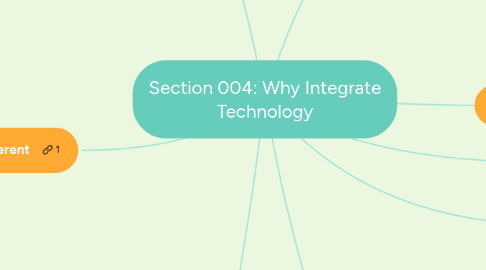
1. Teaching should be different
1.1. be as current as students
1.2. prepare in and out of school
1.3. technology surrounds students every day
2. Standards are different
2.1. adding to most institutions
2.2. be aware of standards to help students meet them
2.3. ISTE (international society for technology in education)
2.3.1. Copyright & Fair Use
2.3.1.1. Educators
2.3.1.1.1. 3c. Citizen: Mentor students in safe, legal, and ethical...
2.3.1.1.2. 3b. Citizen: Establish a learning culture...
2.3.1.1.3. 3d. Citizen: Model and promote management of personal data...
2.3.1.2. Students
2.3.1.2.1. 2c. Digital Citizen: demonstrates an understanding of...
2.3.1.2.2. 2b. Digital Citizen: Engage in positive, safe, legal, and ethical behavior...
2.3.1.2.3. 2d. Digital Citizen: Manage personal data...
2.3.2. Safe Use of the Internet
2.3.2.1. Educators
2.3.2.1.1. 3c. Citizen: Mentor students in safe, legal, and ethical...
2.3.2.1.2. 3d. Citizen: Model and promote management of personal data...
2.3.2.2. Students
2.3.2.2.1. 2b. Digital Citizen: Engage in positive, safe, legal, and ethical behavior...
2.3.2.2.2. 2d. Digital Citizen: Manage personal data...
2.3.3. Cyberbullying
2.3.3.1. Educators
2.3.3.1.1. 3a. Citizen: Create experiences for learners to make positive, socially responsible contributions...
2.3.3.1.2. 3d. Citizen: Model and promote management of personal data...
2.3.3.2. Students
2.3.3.2.1. 2c. Digital Citizen: Demonstrate an understanding of and respect for the rights...
2.3.3.2.2. 2a. Digital Citizen: Cultivate and manage their digital identity and reputation...
2.4. Ohio Technology Standards
2.5. Ohio Learning Standards
3. Skills are different
3.1. redesign classroom for student skill learning
3.2. practice of skills is essential
3.3. 21st century skills
3.3.1. creativity & innovation
3.3.2. communication & collaboration
3.3.3. research & information literacy
3.3.4. critical thinking
3.3.5. nonlinear thinking
3.3.6. visual literacy & visual thinking
3.3.7. spatial thinking
3.3.8. digital age reflection
4. The world's different
4.1. 21st century skills
4.2. globalization
4.2.1. adaptable skills
4.2.2. competition for jobs
4.3. readibility
4.4. spacial literacy
4.5. UDL
4.5.1. 3 principles
4.5.1.1. 1. representation (what)
4.5.1.2. 2. engagement (why)
4.5.1.3. 3. action and expression (how)
4.5.2. why technology is important
4.5.2.1. assistive technologies
4.5.2.2. accessibility
4.5.2.3. online resources
4.5.2.3.1. Techmatrix
4.5.2.3.2. Common Sense Media
5. Students are different
5.1. digital natives
5.2. aliens without technology
5.3. always connected
5.4. multitaskers
5.5. impatient, creative, social
5.6. different types of learners
5.6.1. multiple intelligences
5.6.2. ADD/ADHD
5.6.3. culture and ethnicity
5.6.4. autism
5.6.5. learning styles
5.6.6. at risk
5.6.7. gifted and talented
5.6.8. disabilities

